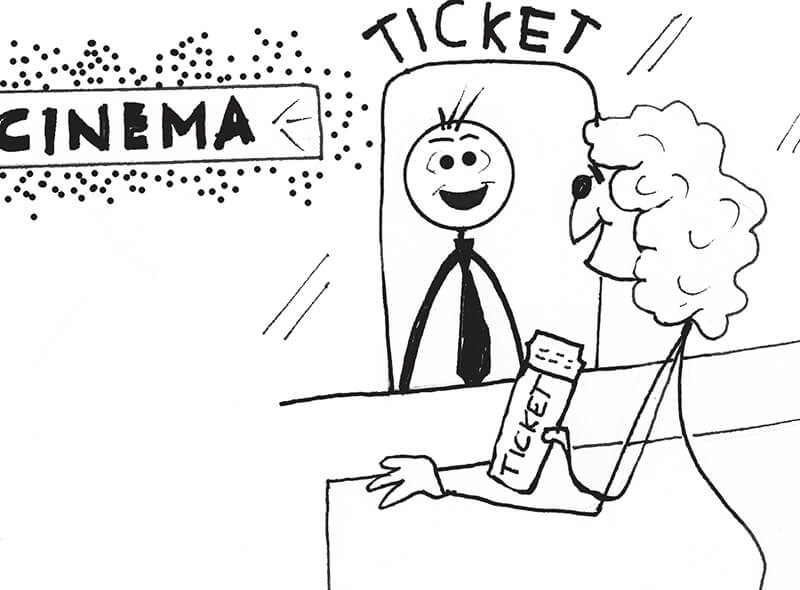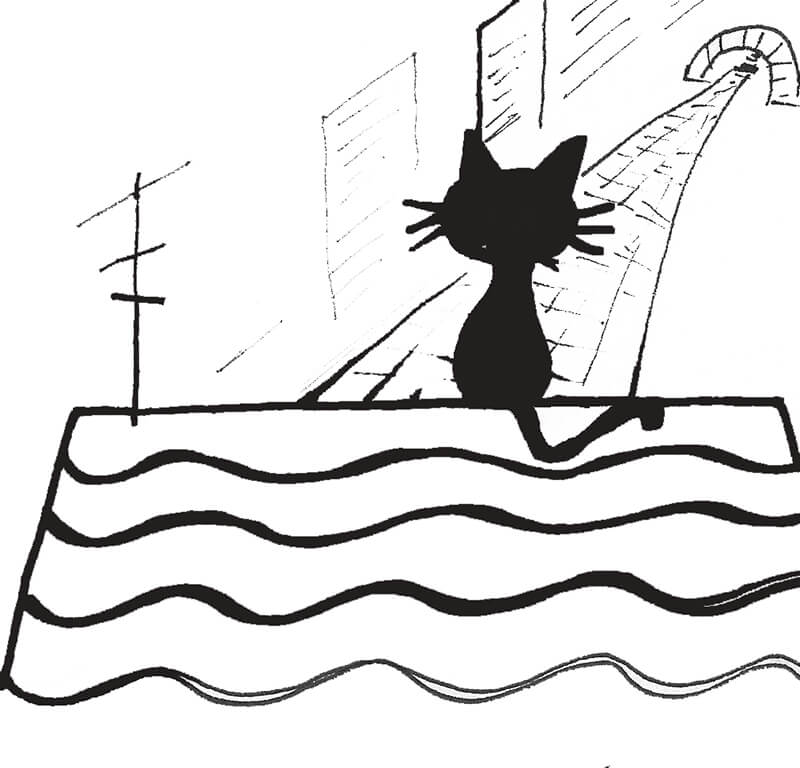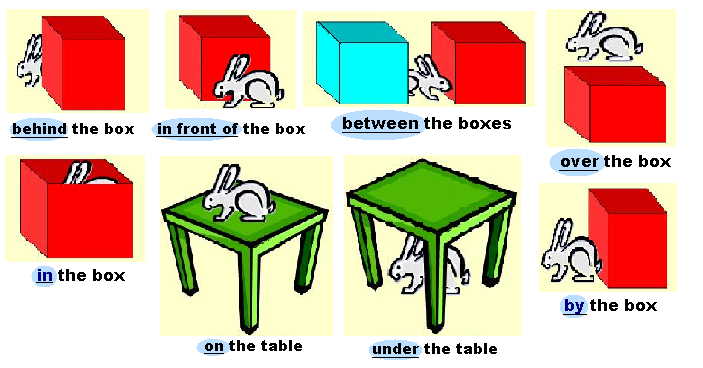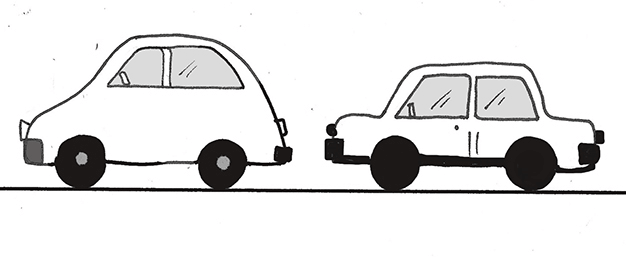Preposizioni e avverbi di stato in luogo

AT
è probabilmente la preposizione più usata. Si utilizza per indicare un posto specifico (casa, ufficio, punti specifici della strada, numeri civici etc.)
I’m meeting Katy at her office. [tooltip]Devo incontrare Katy nel suo ufficio.[/tooltip]
His house is at the end of the road. [tooltip]La sua casa è alla fine della strada.[/tooltip]
si usa anche per indicare un luogo in riferimento alla sua funzione
Caroline is not home right now. She’s at school. [tooltip]Caroline non è a casa in questo momento. È a scuola.[/tooltip]
Elizabeth works at the cinema. [tooltip]Elizabeth lavora al cinema.[/tooltip]

ON
letteralmente “sopra”, viene utilizzato per parlare di qualcosa a contatto con una superficie.
I don’t have my homework right now. I left it on my desk. [tooltip]Non ho con me i miei compiti. Li ho lasciati sulla mia scrivania.[/tooltip]
Tommy’s cat is sitting on the roof. [tooltip]Il gatto di Tommy è seduto sul tetto.[/tooltip]

ATTENZIONE! “ON” viene anche utilizzato per indicare i lati di un oggetto.
The office you’re looking for is on the left/on the right. [tooltip]L’ufficio che stai cercando è sulla sinistra/sulla destra.[/tooltip]
ABOVE
letteralmente “sopra”, “al di sopra”. Viene raramente sostituito da “over”, che spesso però implica movimento.
We have known each other for ages. He lives above us. [tooltip]Ci conosciamo da una vita. Vive sopra di noi.[/tooltip]
There was a trophy on the shelf above Tom's desk. [tooltip]C’era un trofeo sullo scaffale sopra la scrivania di Tom.[/tooltip]
BELOW
letteralmente “sotto”, “al di sotto”. Viene raramente sostituito da “under”, che spesso però implica movimento.
The Smiths live in the apartment below this one. [tooltip]Gli Smith vivono nell’appartamento sotto a questo.[/tooltip]
The sentences below are correct. [tooltip]Le frasi qua sotto sono corrette.[/tooltip]
UNDER
letteralmente “sotto”.
The cat is hiding under the sofa. [tooltip]Il gatto si sta nascondendo sotto il divano.[/tooltip]
Sam can’t find his wallet. It is lying under his bed. [tooltip]Sam non trova il suo portafoglio. È sotto al letto.[/tooltip]
BETWEEN
letteralmente “tra”, indica la posizione di un oggetto situato tra altri due oggetti.
The cinema is located between the library and the Chinese restaurant. [tooltip]Il cinema si trova tra la biblioteca e il ristorante cinese.[/tooltip]
My friend Cami is the girl sitting between Marcus and Lola. [tooltip]La mia amica Cami è la ragazza seduta tra Marcus e Lola.[/tooltip]
AMONG
letteralmente “tra”, indica una posizione tra un numero imprecisato di oggetti.
Josiah's farm is situated among the cornfields of eastern Kansas. [tooltip]La fattoria di Josiah si trova tra i campi di grando del Kansas dell’est.[/tooltip]
I sat among them. [tooltip]Mi sono seduto fra di loro.[/tooltip]
NEAR
letteralmente “vicino”, “nei pressi”.
The cinema is near the library. You can’t miss it. [tooltip]Il cinema è vicino alla libreria. Non puoi non vederlo.[/tooltip]
John’s house is near his school, but he’s always late anyway. [tooltip]La casa di John è vicina alla sua scuola, ma arriva comunque sempre in ritardo.[/tooltip]
NEXT TO
letteralmente “a fianco di”.
Sammie and Clara are very close. They always sit next to each other in class. [tooltip]Sammie e Clara sono molto legate. Si siedono sempre l’una di fianco all’altra in classe.[/tooltip]
They finally delivered that security footage from the building next to the crime scene. [tooltip]Ci sono state finalmente consegnate le immagini di sorveglianza dell’edificio di fianco alla scena del crimine.[/tooltip]

BESIDE
letteralmente "di fianco a, a fianco di, vicino"
John and Mary live next to each other. [tooltip]John e Mary vivono l’uno a fianco dell’altra.[/tooltip]
The fridge is beside the door. [tooltip]Il frigo è a fianco alla porta.[/tooltip]
IN FRONT OF
letteralmente “di fronte a”, “davanti a”. Ha un significato piuttosto generico.
Sophie must be home. Her car is parked in front of her house. [tooltip]Sophie dev’essere a casa. La sua macchina è parcheggiata di fronte a casa sua.[/tooltip]
The guy in front of Marcus is my brother. [tooltip]Il ragazzo di fronte a Marcus è mio fratello.[/tooltip]
OPPOSITE
letteralmente “direttamente di fronte a”, “faccia a faccia”, con un significato più specifico.
The goals were at opposite ends of the field. [tooltip]Le reti erano alle estremità opposte del campo.[/tooltip]
She saw a shadowy figure in the window of the building opposite. [tooltip]Vide un'ombra furtiva nella finestra del palazzo di fronte.[/tooltip]
ACROSS
letteralmente "di fronte a, davanti"
Amy saw the robbers getting inside the opposite building. [tooltip]Amy ha visto i rapinatori entrare nell’edificio di fronte.[/tooltip]
My office building is just across from the mall. [tooltip]Il palazzo del mio ufficio si trova proprio di fronte al centro commerciale.[/tooltip]
Opposite vs. across
http://www.learnersdictionary.com/qa/opposite-vs-across-from
What is the difference between opposite and across from?
Opposite and across from
The prepositions opposite and across from typically mean the same thing: on the other side of (something or someone). In the sentences below, for example, either one of these two prepositions can be used, without a change in meaning.
- She sat across from / opposite me at the table.
- The restaurant is across from / opposite the high school.
- We live across from / opposite a park.
However, there is a context in which the preposition opposite has a different meaning. In written or spoken language about plays or movies, opposite can mean “in a play or movie with (another actor)” as in this example:
- She appears opposite Clint Eastwood in her latest movie.
Finally, be aware that unlike across from, opposite is not always a preposition. It often functions as an adjective or a noun, as in these examples:
- The two boys lived on opposite sides of the street. (opposite is an adjective describing sides)
- My two sisters are complete opposites. (opposites is a plural noun)
BEHIND
letteralmente “dietro”.
Jimmy’s house is right behind mine. [tooltip]La casa di Jimmy è subito dietro la mia.[/tooltip]
Michael car is parked behind Tony’s. [tooltip]La macchina di Michael è parcheggiata dietro a quella di Tony.[/tooltip]

INSIDE
letteralmente “dentro”, “all’interno”.
Josie and Paula got locked inside the cemetery. It was very scary. [tooltip]Josie e Paula sono rimaste chiuse dentro il cimitero. È stato spaventoso.[/tooltip]
It’s best to stay inside the house when it’s snowing. [tooltip]È meglio stare in casa quando nevica.[/tooltip]
OUTSIDE
letteralmente “fuori”, “all’esterno”.
The kids love to play outside during summer. [tooltip]I bambini adorano giocare all’esterno in estate.[/tooltip]
I forgot my keys, so I was locked outside my house. [tooltip]Ho dimenticato le chiavi, quindi sono rimasto chiuso fuori casa.[/tooltip]
IN THE MIDDLE
letteralmente “in mezzo”, o “al centro”.
This pastry has custard in the middle. [tooltip]Il dolce ha della crema nel centro.[/tooltip]
The car broke down in the middle of the road. [tooltip]La macchina si è guastata in mezzo alla strada.[/tooltip]
--- PER APPROFONDIRE L’ARGOMENTO ---
Adverbs of place tell us where something happens.
They are usually placed after the main verb or after the object.
Other adverbs of place: ending in '-wards', expressing movement in a particular direction: backwards | forwards | downwards | upwards | inwards | outwards | northwards | southwards | eastwards | westwards | homewards | onwards